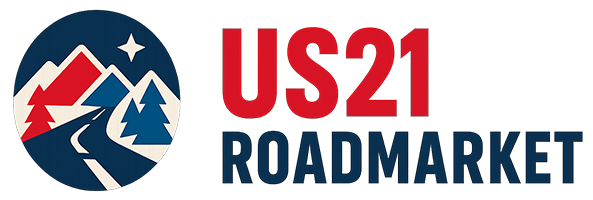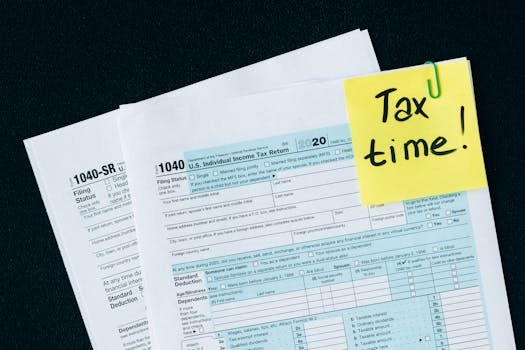A practical, EU-centric guide to getting U.S. gold exposure—legally and efficiently—without ticker shilling. We’ll cover access paths, the PRIIPs caveat (and clean alternatives), brokerage onboarding (W-8BEN, funding, FX), fees, illustrative workflows, risk controls, and security basics for cross-border investing.
Access paths: US-listed ETFs, UCITS equivalents, miners, ADRs
For an EU resident, “U.S. gold exposure” can mean several distinct things. Each path carries different rules, costs, and behaviors in a portfolio. Your first decision is what exposure you actually want: pure bullion beta (gold price), equity beta with gold sensitivity (miners), or a practical proxy available on EU exchanges (UCITS products).
1) US-listed gold ETFs (pure bullion beta, U.S. domicile).
These track spot gold (physically backed or synthetic) and trade on U.S. venues. For EU retail investors, however, most U.S.-domiciled ETFs/ETNs are not directly buyable because of PRIIPs (no EU-compliant KID). There are legitimate exceptions (e.g., you qualify as a professional client under MiFID or the product furnishes an EU KID), but do not assume access. We detail alternatives below.
2) UCITS gold ETCs/ETFs (pure bullion beta, EU domicile).
Functionally, these are the cleanest substitute for U.S.-listed bullion ETFs. They are physically backed, publish bar lists, undergo independent audits, and trade on EU exchanges (Xetra, Euronext, Borsa Italiana, etc.). They typically carry TER ~0.15–0.40%, tight bid-ask spreads on liquid venues, and avoid PRIIPs issues for EU retail. If your aim is “gold price exposure I can rebalance inside my broker,” this is the default path for EU residents.
3) U.S. gold miners (equities) and global miners listed in the U.S.
Buying mining company shares provides equity exposure with gold sensitivity—not a pure hedge. Miners bring operational, cost-inflation, jurisdiction, and management risks, plus equity market beta. They can outperform in gold bull phases but may underperform bullion in drawdowns or when costs rise. From the EU, you can usually buy U.S.-listed miners directly, since stocks are not PRIIPs.
4) ADRs (American Depositary Receipts) of non-U.S. miners.
ADRs represent foreign shares trading on U.S. exchanges/OTC. EU retail can typically access ADRs via brokers with U.S. market connectivity. Expect depositary bank fees, possible thin liquidity for small caps, and standard U.S. market risks. Again, ADRs are equities, not bullion.
5) Futures and options (advanced only).
Gold futures (COMEX) and options introduce leverage, margin, and roll mechanics. Access from the EU depends on your broker and appropriateness assessment. These tools are beyond the scope of most long-only investors seeking a steady 2–10% hedge sleeve.
Takeaway: If you need bullion-like exposure with rebalancing agility, UCITS gold ETCs/ETFs on EU venues are the practical, compliant solution. If you want upside torque and accept equity risk, miners/ADRs can be a satellite sleeve, not a replacement for bullion.
PRIIPs caveat for EU retail and practical alternatives
PRIIPs (Packaged Retail and Insurance-based Investment Products) regulations require that products marketed to EU retail provide a Key Information Document (KID) in EU languages. Most U.S.-domiciled ETFs do not produce a KID, so EU brokers block retail buys. This is a regulatory gate, not a broker whim.
What this means in practice:
- If you are classified as retail under MiFID, expect no access to U.S. ETFs without a KID.
- If you are classified as a professional client (via net worth, experience, and volume criteria set by your broker/regulator), you may regain access—but this changes your protections and is not a loophole to pursue lightly.
- Some brokers occasionally list U.S. products with KIDs, but coverage is patchy and subject to change.
Clean, legal alternatives:
- Use UCITS gold ETCs/ETFs on EU exchanges for bullion beta. They exist precisely to solve PRIIPs for EU retail.
- For U.S. market flavor without PRIIPs friction, buy U.S.-listed miners or ADRs (equities are not PRIIPs). Understand they don’t track spot; you’re taking business risk and equity volatility.
- If your goal is long-horizon physical ownership, consider vaulted allocated gold and rebalance infrequently (see NRMint’s comparison guide linked below).
Don’t do this:
- Don’t chase workarounds using unregulated platforms or offshore accounts to bypass your local rules. Your risks (legal, tax, recourse) can dwarf any tracking benefit.
PRIIPs Reminder: If you can’t buy a U.S. ETF, it’s not your broker being difficult; it’s because the issuer hasn’t provided an EU KID. Choose UCITS or switch the instrument type.
Brokerage setup: account type, W-8BEN, funding, FX
Before placing any order, get your infrastructure right. The details below apply broadly to EU investors accessing U.S. markets (for miners/ADRs) and EU venues (for UCITS gold ETCs/ETFs).
Account type:
- Individual cash accounts are standard; margin adds borrowing/leverage and comes with appropriateness checks and extra risk. If your gold sleeve is a hedge, you generally don’t need margin.
- Verify your market access set (EU venues for UCITS; U.S. venues for miners/ADRs).
Tax form (U.S. markets):
- File W-8BEN with your broker to claim treaty withholding tax rates on U.S.-source income (e.g., dividends from miners). Without it, default 30% withholding may apply. W-8BEN doesn’t change your home-country tax obligations; it just signals your non-U.S. status to U.S. payers.
Base currency and FX:
- Set a base currency (often EUR) and decide whether to hold USD cash or let the broker auto-convert per trade.
- Understand the broker’s FX spread and any conversion fees. Over years, FX friction can exceed TERs.
- If you buy an EUR-denominated UCITS gold ETC, your transaction currency is EUR, but the underlying gold is USD-priced—so USD/EUR still matters to performance unless you choose an EUR-hedged share class.
Funding & withdrawals:
- Prefer SEPA (EUR) for low-cost transfers to EU brokers and multi-currency/neo-brokers. For U.S. venues via an American broker, you may need SWIFT; check fees and beneficiary matching requirements.
- Keep a paper trail (statements, transfer confirmations) for tax/reporting.
Order handling:
- Use limit orders (not market) to avoid paying wide spreads, especially around market open/close and macro data prints.
- For larger tickets, consider TWAP (time-weighted) or staged orders to reduce slippage.
- Note settlement cycles (typically T+2 for equities/ETFs).
Fees to watch: commissions, FX spreads, SEC/FINRA fees
Small, recurring frictions compound. Track them explicitly.
1) Trading commissions:
- Some brokers offer “zero commission” equity/ETF trades; read the footnotes—costs may surface via FX, payment for order flow, or wider spreads.
- Traditional brokers charge per trade; ensure the fee schedule matches your rebalancing cadence.
2) FX conversion:
- Your largest hidden cost if you move between EUR and USD often. Typical retail FX spreads range from ~20–100 bps. On a €20,000 annual flow, that’s €40–€200 per roundtrip at 20 bps vs €200–€1,000 at 100 bps. Consider multi-currency accounts if available.
3) Exchange & regulatory fees:
- SEC/FINRA pass-through fees are usually pennies per trade—ignore for planning but they’ll appear on statements.
- Exchange connectivity/data: live quotes and advanced routes can carry monthly fees—decline unless you truly need them.
4) Product costs:
- UCITS gold ETC/ETF TER: commonly 0.15–0.40% per year, covering custody/operations.
- Bid-ask spreads: check live depth on your venue (Xetra/Euronext often tight).
- ADR fees: depositary banks may charge small, periodic ADR fees deducted from cash flows.
- Custody/inactivity: some brokers levy custody or inactivity fees; plan around them.
5) Slippage & premium/discount:
- ETFs can trade at a small premium/discount to NAV, especially during stress. Place limits and avoid impulsive orders at the open/close.
Pro move: Keep a cost ledger in basis points per year for your gold sleeve. If your all-in (TER + FX + trading) starts creeping above 60–80 bps, reassess workflow or broker.
Example workflows (illustrative, non-advice)
The following are illustrative process patterns to help you design your own IPS (Investment Policy Statement). They are not recommendations.
Workflow A — UCITS bullion sleeve with band rebalancing (EU venues).
- Objective: 5% bullion beta as portfolio hedge.
- Vehicle: UCITS physically backed gold ETC/ETF, EUR-quoted on your main exchange.
- Rules: Target 5% with ±1.5 pp band; review monthly, rebalance on breach or semiannually if not.
- Execution: SEPA-funded EU broker, limit orders during mid-session; cost ledger updated post-trade.
- Notes: If an event (e.g., inflation surprise) pushes weight outside bands intramonth, execute a 50% step back toward target to reduce timing regret.
Workflow B — Satellite U.S. miners via ADRs/stocks (U.S. venues).
- Objective: 0–3% tactical torque alongside the bullion sleeve.
- Vehicle: Large-cap U.S.-listed miners and/or ADRs of non-U.S. majors, bought on U.S. exchanges.
- Onboarding: File W-8BEN, enable U.S. markets; decide whether to hold USD or let the broker auto-FX.
- Rules: Position size capped (e.g., max 3% of portfolio), stop adding if gold spot lags while input costs rise (discipline against cost-inflation traps).
- Risks: Equity beta, management/execution risk, FX if unhedged; review quarterlies for cost lines (AISC, sustaining capex).
Workflow C — Physical/vaulted core + UCITS tactical arm (hybrid).
- Objective: Blend sovereignty and agility.
- Vehicle: 3–5% vaulted allocated (bars with serials, audited), plus 0–3% UCITS ETC/ETF for rebalancing.
- Rules: Vaulted is “do not touch” except annual rebalance; UCITS sleeve runs bands/event rules.
- Cost math: Accept storage bps on core; harvest tight ETF spreads on the tactical arm.
Workflow D — “I want the U.S. ETF” (understanding the gate).
- Reality check: As EU retail, you likely cannot buy U.S.-domiciled ETFs lacking an EU KID.
- Clean paths: a) Use UCITS analogs on EU venues; b) Qualify as professional client (if you truly meet criteria and accept lower protections); or c) Reframe the goal (miners/ADRs).
- Do not: Attempt gray-market accounts or unregulated channels to bypass PRIIPs—compliance and recourse risks are material.
Risks: volatility, tracking, sector concentration
Volatility & drawdowns.
- Bullion is typically less volatile than miners, but it can still draw down when real yields rise or the USD strengthens.
- Miners/ADRs embed equity market swings plus company-specific risks; in stress, they can drop far more than gold.
Tracking & structure risk.
- UCITS bullion ETC/ETFs should closely track spot minus TER; still watch NAV premium/discount in fast markets.
- ADRs/miners do not track spot; they can lag during cost squeezes or management missteps.
- Synthetic exposures add counterparty risk; understand collateral and swap terms if you ever use them.
Sector concentration.
- A sleeve of miners concentrates you in commodities + materials; correlation with your broader equity book may spike at the wrong time. Size conservatively.
FX & rate regimes.
- EUR investors face USD/EUR dynamics in bullion and miners; EUR-hedged share classes reduce FX swing at the cost of hedging drag.
- Rising real yields are typically a headwind for gold; your hedge may feel sleepy until inflation surprises or liquidity stress revive its role.
Behavioral risk.
- Chasing spikes and abandoning rules are the biggest sources of underperformance. Write your bands/calendar and stick to them.
Security basics for cross-border access
Your portfolio only helps if the plumbing is safe. Treat operational security as a first-class requirement.
Broker hygiene.
- Use regulated brokers with investor protection schemes (country-specific).
- Enable 2FA (hardware key or app) and withdrawal whitelists.
- Separate admin email (unique password) from everyday mail; use a password manager.
Device & network.
- Keep OS and browser patched; avoid trading on public Wi-Fi without a trusted VPN.
- Isolate trading to a “clean” profile or device with minimal plugins.
- Beware phishing around statements or “compliance” notices—verify via in-platform messages.
Data & documents.
- Store W-8BEN, statements, and invoices in an encrypted archive.
- Keep a printable IPS with your rules (weights, bands, instruments, cost thresholds) and a quarterly checklist.
Traveling/Nomad tip: Consider a secondary auth method (backup codes, hardware key #2) stored safely off-device so you’re not locked out while abroad.
Resources
For EU residents, getting U.S. gold exposure is straightforward once you match the tool to the job and respect PRIIPs:
- Need pure bullion beta with easy rebalancing? Use UCITS gold ETCs/ETFs on EU venues.
- Want upside torque and accept equity risk? Add a small satellite of U.S. miners/ADRs.
- Prefer sovereign metal that you rarely touch? Use vaulted allocated and rebalance infrequently.
- Can’t access U.S. ETFs? That’s normal under PRIIPs; pick UCITS or change the instrument type.
Write your onboarding checklist, compute all-in costs, size the sleeve 2–10% based on your risk plan, and implement band + calendar rules. Gold’s job is to steady the ship—not to become the ship.
Related resources and interlinks:
- Gold ETFs vs Physical — structure, custody, costs.
- ¿Qué es un ETF de oro? — A really useful hands on guide for EU.
- US Broker Requirements — documents, market access, tax forms.
FAQs
Can I buy a U.S. gold ETF as an EU retail investor?
Usually no because of PRIIPs (no EU KID). Use UCITS gold ETCs/ETFs on EU exchanges, or seek professional client classification if you truly qualify (with different protections).
Are miners a good substitute for bullion?
They’re a different asset. Great for torque in bull phases, but they carry equity and operational risk. Use miners as a satellite, not your core hedge.
Should I pick EUR-hedged share classes?
If you want to reduce USD/EUR noise, EUR-hedged classes help—but hedging has a cost drag. If FX diversification is acceptable, unhedged is simpler.
Do I need W-8BEN for UCITS?
No; UCITS products are EU-domiciled. You do need W-8BEN for U.S. securities (e.g., miners, ADRs) to apply treaty withholding rates.



